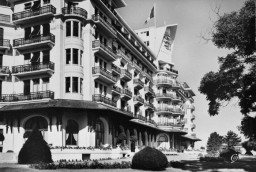You searched for: 南苏丹谷歌霸屏推广排名【TG飞机:@bapingseo】2020谷歌搜索单词排名【TG电报:@bapingseo】谷歌seo零基础教程收录【Telegram:@bapingseo】欧宝官方网址下载网站谁知道闲时快乐斗地主游彩网下载安装?9tX7zl/Qg01oF.html
<< Previous | Displaying results 176-200 of 330 for "南苏丹谷歌霸屏推广排名【TG飞机:@bapingseo】2020谷歌搜索单词排名【TG电报:@bapingseo】谷歌seo零基础教程收录【Telegram:@bapingseo】欧宝官方网址下载网站谁知道闲时快乐斗地主游彩网下载安装?9tX7zl/Qg01oF.html" | Next >>
-
Gerda Blachmann Wilchfort describes the mood of passengers on the "St. Louis" after they were denied entry into Cuba
Oral HistoryGerda and her parents obtained visas to sail to Cuba on the "St. Louis" in May 1939. When the ship arrived in Havana harbor, most of the refugees were denied entry and the ship had to return to Europe. Gerda and her parents disembarked in Belgium. In May 1940, Germany attacked Belgium. Gerda and her mother escaped to Switzerland. After the war, they were told that Gerda's father had died during deportation.

-
The United States and the Holocaust, 1942–45
ArticleWhy did the United States go to war? What did Americans know about the “Final Solution”? How did Americans respond to news about the Holocaust? Learn more.

-
Maria Orlicka
ID CardMaria was born to a poor family in the industrial town of Jaworzno, not far from Krakow, in southwestern Poland. Both of Maria's parents worked. Like her parents, Maria was baptized in the Roman Catholic faith. 1933-39: Maria took care of the house when her parents were working. She was 11 years old when the Germans invaded Poland on September 1, 1939. German troops reached Jaworzno that same month. Jaworzno was in an area of Poland that became formally annexed to Germany. 1940-44: The Germans arrested…
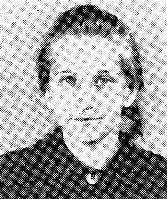
-
Robert Kulka
ID CardRobert was the son of Jewish parents, Leopold and Florentina Kulka, and was raised in the Moravian town of Olomouc. After completing secondary school, he attended a business school until 1909. He began a business in Olomouc and in 1933 he married Elsa Skutezka from the Moravian city of Brno. The couple made their home in Olomouc. 1933-39: The Kulkas' son, Tomas, was born a year and a day after they were married. In 1937 Elsa's father passed away and the Kulkas moved to Brno, where Elsa and her husband…
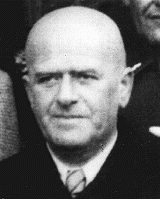
-
Tomas Kulka
ID CardTomas' parents were Jewish. His father, Robert Kulka, was a businessman from the Moravian town of Olomouc. His mother, Elsa Skutezka, was a milliner from Brno, the capital of Moravia. The couple was well-educated and spoke both Czech and German. They married in 1933 and settled in Robert's hometown of Olomouc. 1933-39: Tomas was born a year and a day after his parents were married. When Tomas was 3, his grandfather passed away and the Kulkas moved to Brno, which was his mother's hometown. On March 15,…

-
Wolfgang Kusserow
ID CardWhen Wolfgang was an infant, his parents became Jehovah's Witnesses. His father moved the family to the small Westphalian town of Bad Lippspringe when Wolfgang was 9. Their home became the headquarters of a new Jehovah's Witness congregation. Wolfgang and his ten brothers and sisters grew up studying the Bible daily. 1933-39: The Kusserows were under close scrutiny by the Nazi secret police because of their religion. As a Jehovah's Witness, Wolfgang believed that his highest allegiance was to God and His…

-
Sylvia Winawer
ID CardSylvia's Jewish-born parents had converted to Christianity as young adults, and Sylvia was raised in the Christian tradition. Mr. Winawer was a successful lawyer and the family lived in an apartment in the center of Warsaw. Sylvia's mother collected art. 1933-39: Sylvia attended a private school run by the Lutheran Church, and she loved her school and classmates. When she was 9, her parents brought her the most wonderful "present"--a new sister! Two years later life changed when the Germans invaded Poland…

-
Warsaw district handbill announcing penalties for anyone caught assisting Jews
ArtifactOn September 5, 1942, the SS and Police Leader of the Warsaw District issued this announcement threatening the death penalty for anyone who aided Jews who had left the ghetto without authorization. This poster was put up in the wake of the mass deportation of Jews from the Warsaw ghetto to the Treblinka killing center in summer 1942. SS officials were well aware that thousands of Jews had fled the ghetto to go into hiding and urged people to turn them in. The poster reminds the city's non-Jewish…

-
Frances Perkins
ArticleFrances Perkins was FDR's secretary of labor. Learn about her role in the rescue of European Jews whose lives were threatened by the Nazi regime.

-
Law on the Head of State of the German Reich
ArticleThe Law on the Head of State of the German Reich was the last step in destroying democracy in interwar Germany and making Adolf Hitler a dictator. Learn more.
-
Doriane Kurz describes appell (roll call) in Bergen-Belsen
Oral HistoryDoriane's Jewish family fled to Amsterdam in 1940, the same year Germany occupied the Netherlands. Her father died after deportation to Auschwitz. After their mother was seized, Doriane and her brother hid with gentiles. The three were reunited at Bergen-Belsen, where they were deported via Westerbork. They were liberated during the camp's 1945 evacuation, when Doriane was 9. Her mother died of cancer soon after Doriane helped her recover from typhus. Doriane and her brother immigrated to the United States.
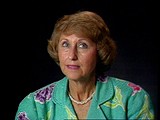
-
Izak Lichtenstein Testimony Excerpt
ArticleRead an excerpt from Izak Lichtenstein’s 1947 testimony about the resistance movement in the Lachva (Lachwa) ghetto.
-
SS: Key Dates
ArticleKey dates in the history of the SS (Schutzstaffel; Protection Squadrons), charged with the leadership of the “Final Solution,” the murder of European Jews.

-
Theresienstadt: Final Weeks, Liberation, and Postwar Trials
ArticleThe Theresienstadt camp-ghetto existed from 1941 to 1945. Learn about its final weeks, liberation, and the postwar trials of SS commandants and other staff.
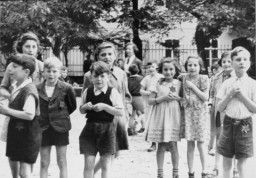
-
Bergen-Belsen: Key Dates
ArticleExplore a timeline of the history of the Bergen-Belsen camp in the Nazi camp system. Initially a POW camp, it became a concentration camp in 1943.
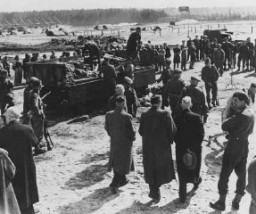
-
The Press in the Third Reich
ArticleAfter rising to power, the Nazis eliminated freedom of the press in Germany. Learn more about how they established control over the press and manipulated it.

-
Death Marches
ArticleAs Allied forces approached Nazi camps in the last months of WWII, the SS organized brutal “death marches” (forced evacuations) of concentration camp inmates.

-
Stutthof
ArticleLearn about the Stutthof camp from its establishment until liberation in May 1945, including conditions, forced labor, subcamps, and death marches.
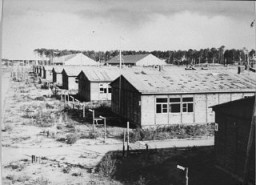
-
Raoul Wallenberg and the Rescue of Jews in Budapest
ArticleSwedish diplomat Raoul Wallenberg led an extensive rescue effort during the Nazi era. His work with the War Refugee Board saved thousands of Hungarian Jews.
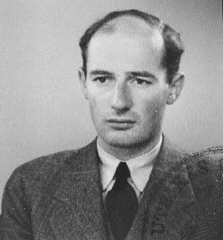
-
Kindertransport, 1938–40
ArticleKindertransport refers to a series of rescue efforts between 1938 and 1940 that brought thousands of refugee children to Great Britain from Nazi Germany.

-
Theresienstadt
ArticleThe Theresienstadt camp/ghetto served multiple purposes during its existence from 1941-45 and had an important propaganda function for the Germans. Learn more.

-
Berlin
ArticleBerlin was home to Germany’s largest Jewish community. It was also the capital of the Third Reich and the center for the planning of the "Final Solution."

-
Tarnow
ArticleLearn about the prewar Jewish community of Tarnow, German occupation, deportations and killings of the Jewish population, ghettoization, and resistance.

-
Riga
ArticleGerman forces occupied Riga, Latvia in July 1941. Learn more about the establishment of the Riga ghetto, mass shootings of Jews, and Jewish resistance.

-
The Evian Conference
ArticleAt the July 1938 Evian Conference, delegates from nations and organizations discussed the issue of Jewish refugees fleeing persecution in Nazi Germany. Learn more
